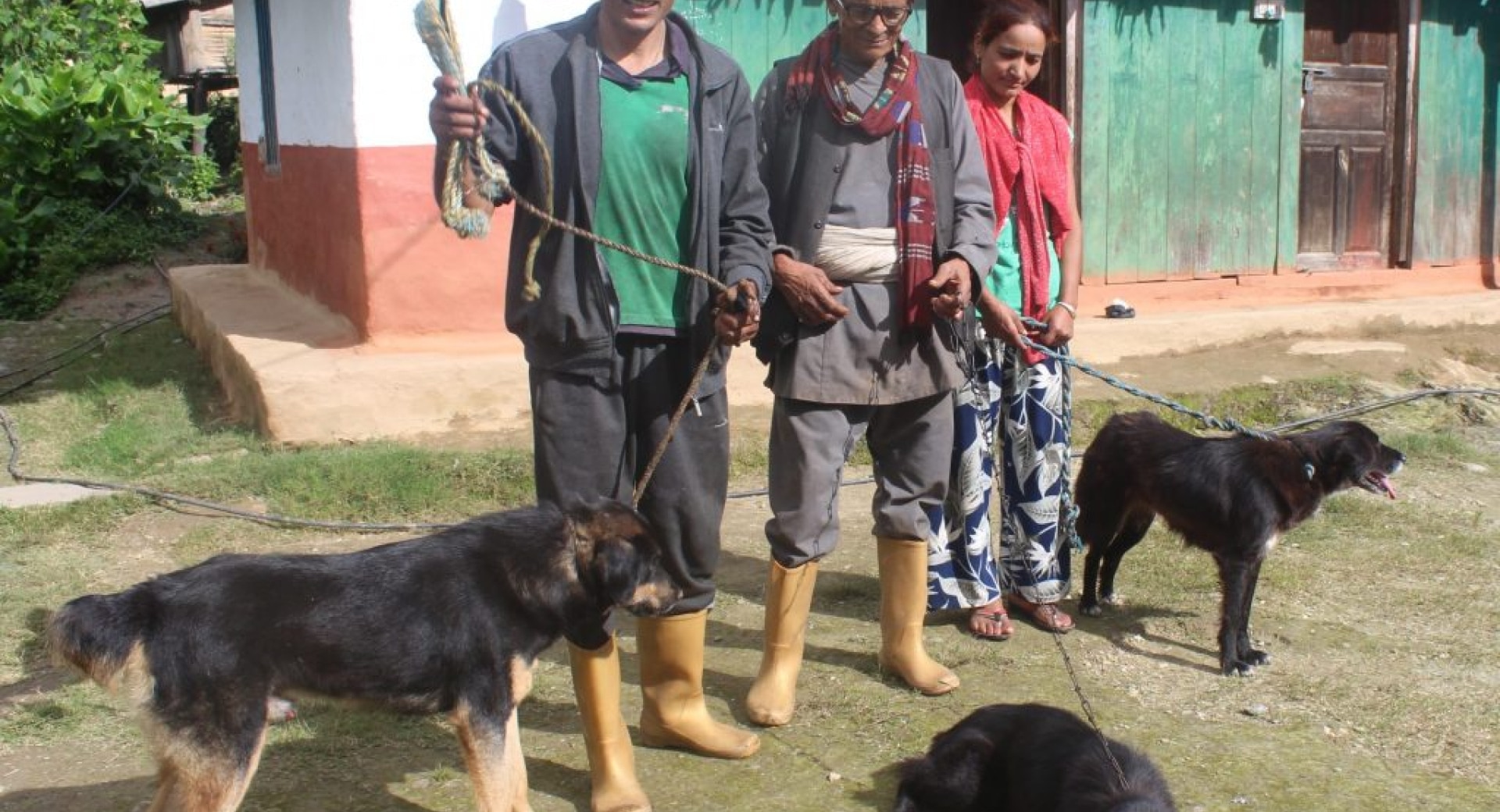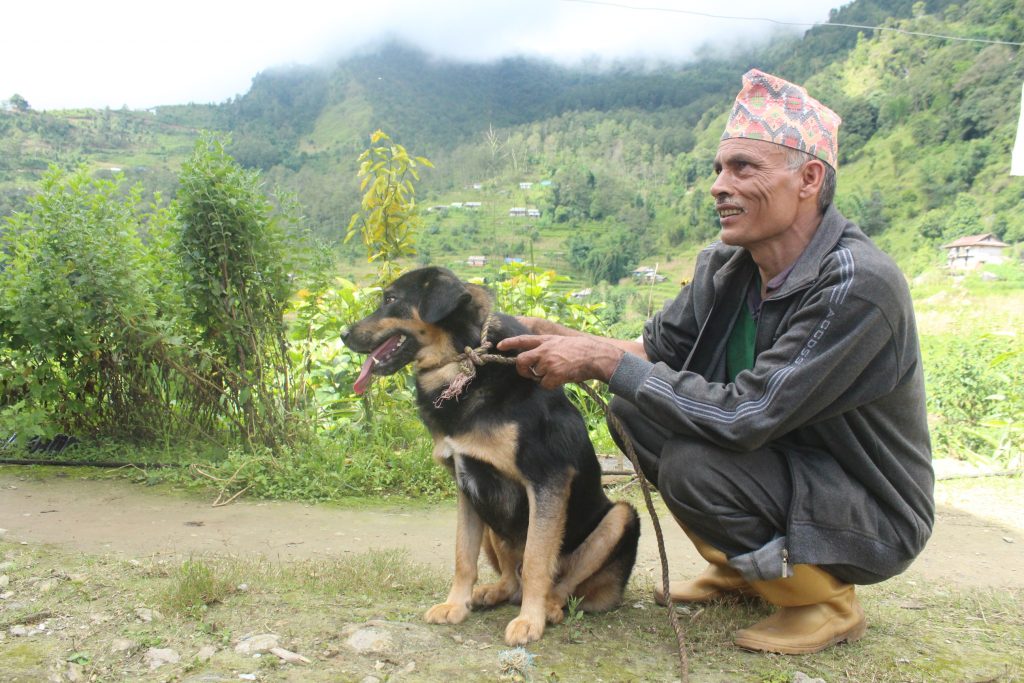Free-Roaming Dogs: a Major Threat to Red Pandas

On a daily basis, red pandas face an uphill battle for survival. They are threatened by habitat destruction and fragmentation, illegal poaching, haphazard development work, and untimely weather affecting the flowering of their primary food source, bamboo.
Another threat has emerged: numerous free-roaming dogs within the red panda habitat, and they appear to be triggering high mortality rates of red pandas.
The presence of free-roaming dogs can cause wildlife to move away from an area, either temporarily or permanently. Wild animals (including red pandas) become less active during the day in order to avoid interaction with the strays. Free roaming dogs can kill wild animals and spread diseases such as rabies and distemper. They can also pollute water sources and transmit parasites to both animals and humans.
Neutering is the primary solution to reduce the long-term dog population. But, where to implement such a program? Neutering requires veterinary professionals, resources, and a population of humans willing to participate.
Tourists and pilgrims are also often targeted by free-roaming dogs, and the Ilam and Taplejung Districts, located near the Indian border, are major tourists destinations. A neutering agreement was made with the District Livestock Service Centre: Ilam and Taplejung for their medical services. News about the neutering and vaccination program was broadcasted on local radio and letters were delivered to respective Community Forest User Groups (CFUGs).
Initially, the response was muted as locals were unsure their dogs would survive the operation. There was also misconceptions about whether the neutering process would make their dogs lethargic. Generally, villagers prefer vaccines and as well as birth control tablets over neutering.
A team of technicians performed operations on 200 dogs between the ages of 8 months to 9 years, benefitting 156 households of 8 CFUGs from Ilam and Taplejung (Choyatar CF, Nunthala CF, Kalikhop dadeli CF, Chipchipe CF, Laliguras mahila CF, Pathivara simbu CF, Mayampatal CF, Phurumbhu kharka CF). 53 dogs received rabies vaccinations.
Two weeks after the operations a few people complained their dog’s healing process took longer than expected. No other problems were encountered, though several people reported some neutered dogs had become excessive barkers.
 Local community member and dog.
Local community member and dog.

Red panda cub in Eastern Nepal.
Street dogs are a desired target for neutering, but unfortunately, they are very difficult to trap, and require technicians, and equipment. A dart method can be used to sedate the dogs prior to operation, but this is expensive and requires a high level of expertise. Challenges remain in keeping free-roaming dog populations from becoming a larger problem.
RPN recommends additional scientific research to understand free-roaming dogs’ impact on red panda survival and conservation. We also strongly support working with local professional organizations who can ensure veterinary professionalism. RPN will continue to work with local communities to ensure red panda populations, and the communities that support them, remain healthy and strong.
Pema Sherpa, Danielle Lippe, Mark Hougardy & Terrance Fleming
Red Panda Network
